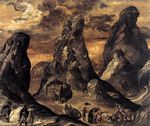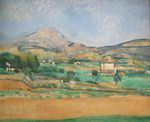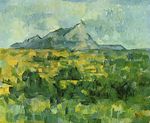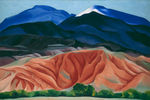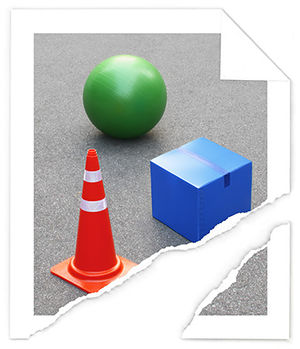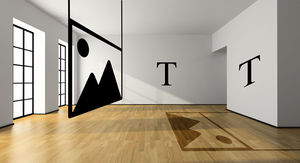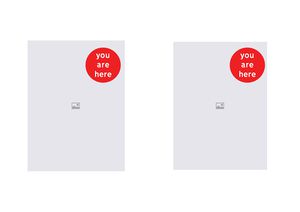Research: Difference between revisions
| Line 146: | Line 146: | ||
<center>http://upload.wikimedia.org/wikipedia/commons/4/4b/Fuji_3D.gif</center> | <center>http://upload.wikimedia.org/wikipedia/commons/4/4b/Fuji_3D.gif</center> | ||
Revision as of 20:34, 6 March 2015
History
As a start for my research working with the signs of the template, the icon; the landscape. I ‘m going to start with some history; landscape art. At specially paintings, because they go a way back. I’m going to grab some examples what I can connect to the icon, the digital landscape.
El Greco, Mount Sinai
‘The painting was probably made for the antiquarian Fulvio Orsini, librarian to Cardinal Alessandro Farnese, in whose palace the artist lived from 1570 to 1572. It shows the peaks of Mount Sinai, a place sacred to Judaism and Christianity, of special significance for Eastern Orthodoxy, and revered by Muslims. At the centre is Mount Horeb, where Moses received the tablets of the Ten Commandments from God. On the left is Mount Epistene. The peak on the right is St Catherine's Mount, where the early Christian Martyr Catherine had been buried. The small citadel at the foot of Mount Horeb is the monastery that to this day bears her name.’ http://www.wga.hu/frames-e.html?/html/g/greco_el/03/0303grec.html
What I notices when I was researching old landscape paintings, is that I couldn’t find a lots of mountains. The oldest was El Greco, Mount Sinai, which is typical of the romantic cartography of mannerism. Okay what has this to do with the digital landscape? Nothing.
An important part of landscape painting is to connect to the nature. They become a part of the nature. But when I got digitalized what happens to the landscape? Can I return it to the nature? Can it be part of the nature again?
Than halfway 1800 I found Paul Cézanne who was fascinated by the Mont Sainte-Victoire in southern France. In a lot of his ‘mountain paintings’ you see a transition from impressionistic to more cubist style. Cézanne's often repetitive, exploratory brushstrokes are highly characteristic and clearly recognizable. He used planes of colour and small brushstrokes that build up to form complex fields. The paintings convey Cézanne's intense study of his subjects.
Its maybe just one mountain and not two, but I’m getting closer to the abstract, minimal, digital mountain.
Even with the so called ‘mother of American Modernism’ Georgia O’Keeffe painted the nature.
Dutch landscape art became popular in the 17 century, and tended to make smaller paintings for smaller houses. But most of them do not included mountains, simple because there are none mountains in Holland. It gets interesting at the end of 19 century and early 20th centuries, when Mondriaan makes abstract landscapes in the name of modernism.
You actually don’t see a landscape, but this series of ‘Pier and Ocaan’ is based on Dutch landscapes during 1916. They also called ‘plus-minus’-series, because of the horizontal and vertical crossing each other.
‘I will try to speak of the beauty of shapes, and I do not mean, as most people would suppose, the shapes of living figures, and their imitations in painting, but I mean straight lines and curves and the shapes made from them, by the lathe, rules or square. They are not beautiful for any particular reason or purpose, as other things are, but are eternally, and by their very nature, beautiful, and give a pleasure of their own quite free from the itch of desire: and in this way colours can give a similar pleasure’ – In the Philebus of Plato, Socrates.
Maybe I’m asking too much of this digital landscape and connect them to greatest painters. But it inspired me to make this icon bigger than it is. My focus is to bring it back to nature, to turn the digital to physical, and to make it aesthetic. The history examples are my inspiration to create it.
Artist
Gallery Template is an installation that transposes the web template inside the wire frame of the gallery space, and vice versa. Bright fields of vinyl cover, with restrictions, the white walls and gray floor of the gallery space. A computer webcam films and then displays in the browser perfectly flat the typical combination of header, footer and sidebar. It is a visual representation of our current template culture. The invitation to "insert your content here" is present in every aspect of contemporary life, demonstrated by the visitor's tendency to place themselves within the composition.
Marlon Harder, Gallery Template, PZI student - http://template01.info/
The broken image icon is to replace an image that failed to load or is missing, which is used only in cyber space and has no reason to exist in physical reality. Through this installation, I tried to crack the border between them by transferring the symbol from one world to another world. I am wondering how people will react to the broken image icons in the real stuff. Will they feel blankness and imagine missing images, focusing on its original information, or will they accept them as just small images?
Beomyoung Sohn, Broking Image - http://beom-young.com/Broken-Things-1
Icon or Symbol?
‘Icon is used to represent a particular category of an object. Icon is similar to the actual product and anyone can tell what it stands for because of similarities. One thing to be understood is that icons can be made of real objects only, and concepts and feelings cannot be depicted using icons as there are no figures for these concepts (liberty, freedom, country, peace etc) and feelings (hatred, love, anger etc).’ - Posted on February 4, 2012 by Olivia, http://www.differencebetween.com/difference-between-icon-and-vs-symbol/
‘Real object only’, when I was searching for a picture with two mountains and a sun, I didn’t found even one picture, so the icon is not based on a real object, but something that could be real. It’s an imaginary landscape. In that case it’s more a symbol of mountains.
‘The signs, which have become known internationally, because of their association with an object or phenomenon over a long period of time, are called symbols. Symbols do not resemble what they stand for, and they have to be learned by people to know what they mean. A symbol represents products or ideas, whereas icon represents only items that are visible.’ - Posted on February 4, 2012 by Olivia, http://www.differencebetween.com/difference-between-icon-and-vs-symbol/
The ‘two mountain’ is also a sign that has to be learned by people to know what they mean, because the image itself does not resemble to the actual product. You don’t have to place similar images as the icon. So are the two mountains not a symbol? The symbol represents product or ideas, so ideas to place images on the two mountain sign.
But what If you don’t know the symbol? How come everyone knows it? How do we know this language?
What now?
So I didn't find out where the image comes from, but I know where it all started. In photography and digital photography, landscape mode is a function of the digital camera that is used when you are taking photos of a scene, not a single object (such as "Portrait Mode"). When taking photos in landscape mode, the digital camera will automatically focus on as much of the scene as possible by using a large depth of field. The digital camera may also use a slower shutter speed in some cases. The symbol of this mode was an image of two mountains.
Another theory where the symbol ‘the mountains’ comes from, is the Fuji mountain in Japan. Mount Fuji is located on Honshu Island and is the highest mountain in Japan. It’s one of the Japan’s ‘Three Holy Mountains’, therefor the famous camera company FujiFilm is named after that holy mountain. My theory is that the image of the mode landscape is made after the Fuji mountain. It was the ideal landscape for the Japanese and the FujiFilm company.
Between Windows 95 and 98 the took the symbol over as an icon of an image, like a jpg. You have also the option portrait and landscape as vertical and horizontal for rotating the image. But why template only use the landscape symbol, is for me a mystery. Because there are also vertical frames, with the landscape symbol.
I mailed all of the companies about where the symbol comes from and why do they use it. All of the companies didn't give me a good answer. Some of them response easily with ‘we don’t know’, or ‘it is just a simple placeholder with a random color.’ Some of them sad that is was an empty placeholder, which give a clear idea where to put you image.
When I was busy ordering all those photo books, one company mailed me because they said that the photo book was empty. I emailed back with ‘there are images of templates in the photo book’, I had never response to this and they just make the photo book for me. So all the other companies never check what’s in the photo books, because I place real images.
After I try to change the context of the symbol to transform it to something physical, such as a big wooden frame with two mountains. If notice that I’m creating a physical template like Marlon Harder, but only related to the photo book. When you have a room with the symbols of a template, you are in the template. You filling in the empty placeholder. Life becomes a template, life is a template. Are you aware of that? Or I’m inviting you to place an image in the room? By transform the photo book in to something physical, do we come the photo book? Life is a photo book?



